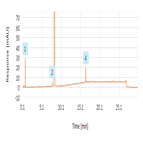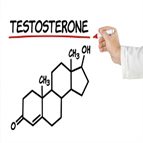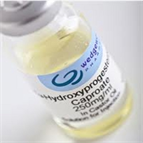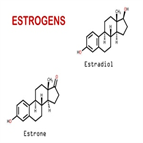Find methods for your needs
Refine by Feature
Displaying 1-5 of 20 results for Tag: Steroid
Related substance analysis of Estradiol Valerate as per EP using Accucore C18 HPLC column
Instrument Type: HPLCThe Thermo Scientific Dionex UltiMate 3000 LC system is applied for the analysis of Related substance of Estradiol Valerate as per EP. The analysis was performed on a Thermo Scientific Accucore C18 HPLC column using the method described in the EP monograph. The results obtained were found to be within acceptance criteria as stated in the monograph. Resolution between Impurity C & estradiol valerate peak was observed to be 3.18 in the refernce solution, a (Criteria is NLT 2.5)
LC-MS quantitative screening method for 18 anabolic steroids in oral fluid using MS2 spectra data collected with Q Exactive Orbitrap mass spectrometer
Instrument Type: LCMSMSAndrogenic-anabolic steroids (AAS) are drugs which mimic effects of testosterone and dihydrotestosterone in the human body. They increase protein synthesis within cells which results in buildup of cellular tissue, especially in muscles. Use of anabolic steroids by athletes to increase body weight is referred to as doping and is banned by major sporting bodies. In this work we implemented Thermo Scientific Q Exactive ultra high resolution mass spectrometer to ensure high method specificity and sensitivity.
Quantitative Analysis of Low Testosterone Concentrations in Plasma Using the TSQ Quantiva Triple-Stage Quadrupole MS
Instrument Type: LCMSMSAnalysis of testosterone in female and juvenile plasma samples for research requires an analytically sensitive method with a limit of quantitation of at least 10 pg/mL. Liquid chromatography coupled with mass spectrometry (LC/MS), an analytically sensitive and selective technique, is widely accepted for testosterone analysis in complex matrices such as human serum or plasma.
High-Throughput LC-MS/MS Quantification of 17-Hydroxyprogesterone (17-OHP) in Human Blood Serum for Clinical Research Purposes
Instrument Type: LCMSMS17-Hydroxyprogesterone (17-OHP) is a biosynthetic precursor to other steroids such as corticosteroids, androgens, and estrogens. It is converted to 11-deoxycortisol by 21-alpha-hydroxylase or to androstenedione by 17, 20 lyase. Researchers investigating how these enzymes function need to measure 17-OHP within an analytical range of 10 to 1,000 ng/dL (0.3 to 30 nmol/L) in blood serum. 17-OHP readily forms positive ions by atmospheric-pressure chemical ionization (APCI), which is less prone to matrix effects than electrospray ionization (ESI).
High-Throughput LC-MS/MS Quantification of Estrone (E1) and Estradiol (E2) in Human Blood Plasma/Serum for Clinical Research Purposes
Instrument Type: LCMSMSEstrone (E1) and estradiol (17-beta-estradiol or E2) are two of several estrogens involved in the development and function of female anatomical and physiological characteristics and processes such as the menstrual cycle. Researchers seek to quantify E1 and E2 within an analytical range of 5 to 500 pg/mL (18.5 to 1,850 pmol/L) in blood plasma or serum. E1 and E2 form negative ions by deprotonation in both ESI and APCI MS sources. In order to robustly achieve the needed quantitation limits, most researchers use dansyl chloride to form positively charged derivatives of these and other estrogens.





